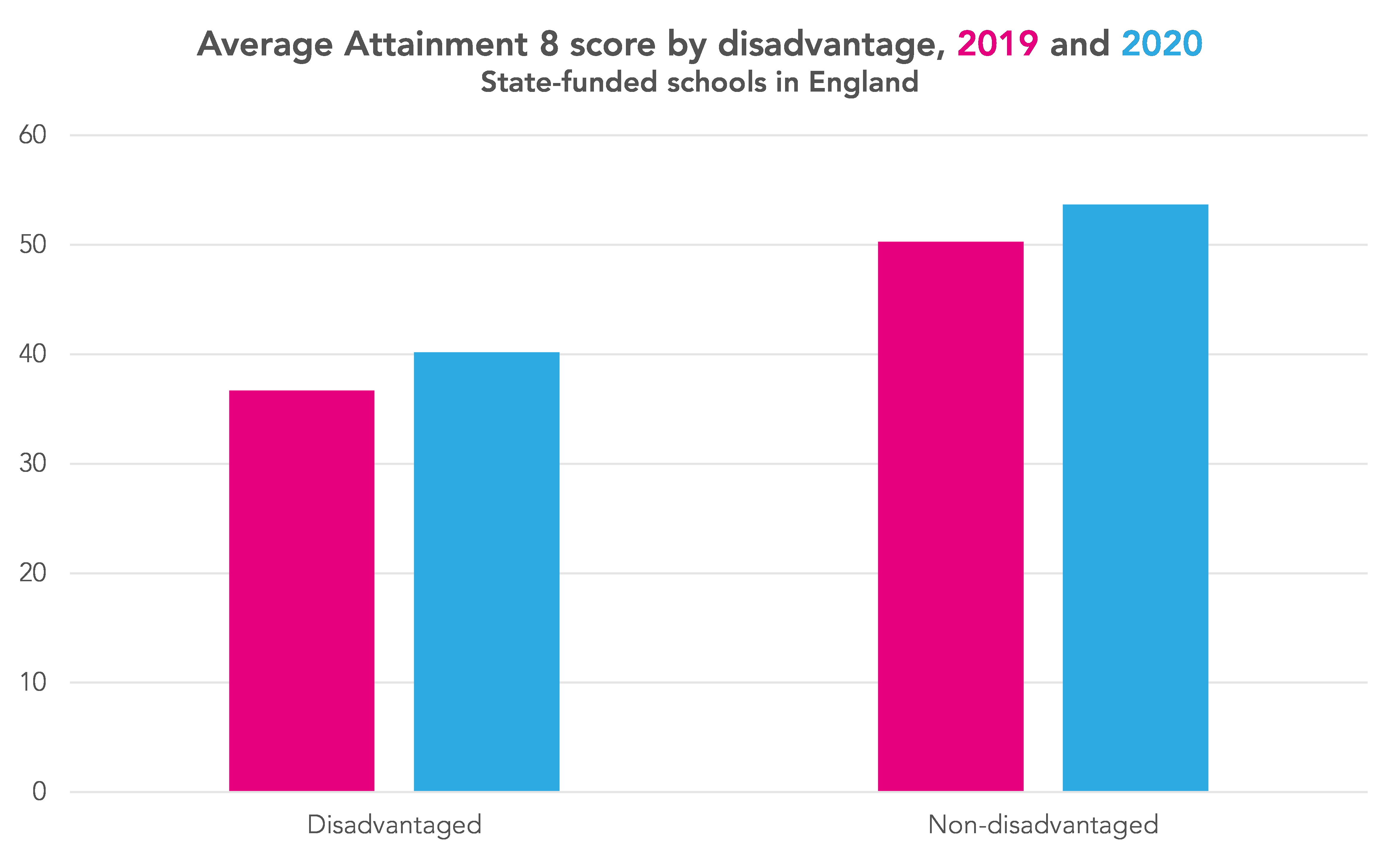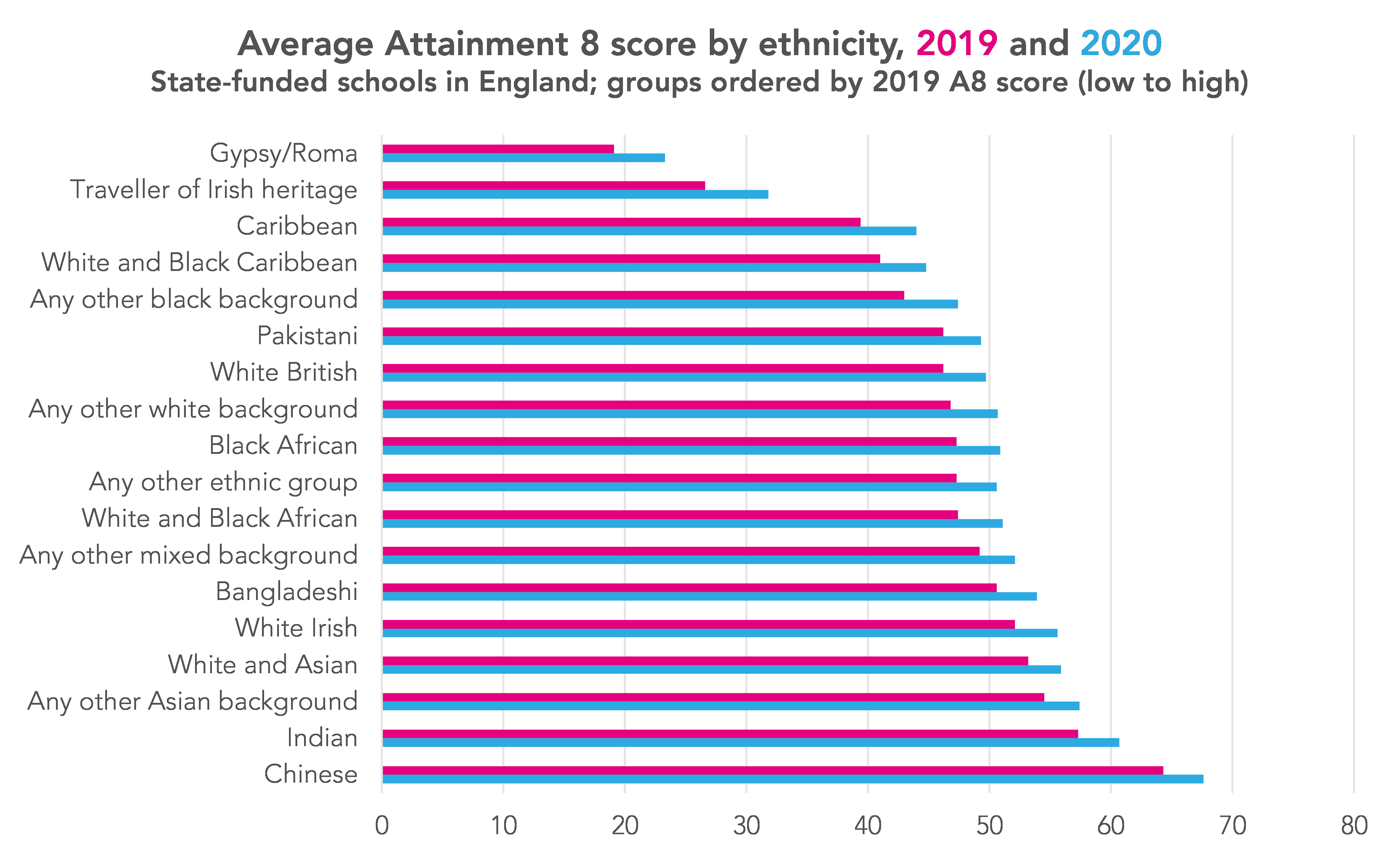Today the Department for Education has published statistical releases on Key Stage 4 attainment and 16-19 attainment in 2020.
These summarise attainment in qualifications awarded this summer when exams were cancelled. As you’ll remember, plans to award grades via algorithm en masse were abandoned, with pupils awarded the higher of centre assessment grades and the grades they would have been given by the algorithm.
Back in September, we showed the extent to which attainment in GCSEs had increased based on data collected from a sample of schools.
Today’s releases provide much more detail on the grades awarded in the summer based on the full set of data for all schools, and including results for different pupil groups.
The attainment of disadvantaged groups
During the summer, concern was expressed about the likely effect of bias on the centre assessment grades for particular groups of pupils, notably disadvantaged and black students.
Pleasingly, and as we suspected, it appears that attainment gaps have not widened. That isn’t to say that fears were unfounded. Increased awareness of possible bias may have been a contributory factor to the grading processes adopted by schools.
According to the Department’s disadvantage gap index, the gap in attainment between disadvantaged pupils and their peers in state-funded schools narrowed slightly having increased slightly in the previous two years.
This slight increase in attainment can also be seen in terms of Attainment 8. The average grade achieved by disadvantaged pupils improved by 0.35 grades per subject compared to 0.34 grades for other pupils.
Nonetheless, the distributions of attainment for disadvantaged and other pupils are different. The gap in the percentage of pupils achieving grade 4 or above in English and maths narrowed by 2 percentage points, but the gap in the percentage achieving grade 5 increased by 1 percentage point.
The attainment of ethnic groups
The attainment of the lowest attaining ethnic groups in 2019 – Gypsy/Roma, Irish heritage Traveller and black Caribbean – tended to improve the most in 2020, as the charts below show.
Summary
Perhaps contrary to expectation, the use of centre assessment grades in 2020 resulted in a narrowing of attainment gaps for low-attaining groups.
This isn’t conclusive evidence that some groups weren’t disadvantaged by the 2020 arrangements. If the differences between centre assessment grades and exam grades tended to be larger for lower-attainers than higher-attainers (setting aside consideration of other pupil characteristics) then it should be no surprise that groups of pupils with proportionally more lower-attainers should appear to have improved by a greater margin. More detailed analysis controlling for prior attainment may be more revealing.
Nonetheless, the early results give a degree of confidence that disadvantaged pupils and those from ethnic groups that on average have lower attainment won’t be further disadvantaged if centre assessment grades have to be used again in 2021.
Want to stay up-to-date with the latest research from FFT Education Datalab? Sign up to Datalab’s mailing list to get notifications about new blogposts, or to receive the team’s half-termly newsletter.









This is so important – Your chart will not be comfortable reading for many because it reproduces the fact of differential attainment for different ethic groups which is driven by mean cognitive ability/IQ as revealed by CATs scores – See page 10 of this GL Assessment report the data from which exactly reproduces the pattern in your chart
https://lesacreduprintemps19.files.wordpress.com/2012/02/glassessment.pdf
This truth is unacceptable to many who prefer to resort to a flawed theory of racist discrimination
The alleged attainment gap is an illusion based on this, which has translated into the parallel flawed assumption that the (non-existent) attainment gap has been growing.
If we want to raise attainment of all ethnic/class groups we have to apply the methodology of Cognitive Acceleration (CASE, CAME etc) to all pupils at all levels of attainment